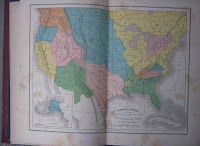
Above is a photo of the cover of one of the most famous poems penned by Francis Thompson (pictured edition published by Morehouse-Barlow Co. in 1980 and illustrated by Jean Young). Thompson was born in 1859 in Lancashire, England and led a troubled life of ill-health, poverty and an addiction to opium; he died at age 48 from Tuberculosis (Wikipedia). He moved to London in 1885 and sent a manuscript to Wilfred Meynell who edited the Catholic periodical “Merry England.” Meynell and his wife Alice evidently recognized Thompson’s talent and subsequently published “Poems” which included “The Hound of Heaven.” (answers.com)
Religious in overtone, Thompson’s poetry received some criticism for verbosity and lack of originality in thought. (answers.com) However, for those interested in the derivation of sayings and titles, the U.S. Supreme Court allegedly took its “with all deliberate speed” (Brown v. Board of Education II, remedy) from a stanza in this poem: “Nigh and nigh draws the chase, With unperturbed pace, Deliberate speed, majestic instancy…” (Wikipedia) And a phrase from another poem “The Kingdom of God,” allegedly provided the title for Han Suyin’s novel and subsequent movie “Love is a Many Splendored Thing.” (Wikipedia) While neither rare nor particularly expensive, publications such as the above pamphlet often provide interesting tidbits with which to bore your friends. I leave you with a few more words from Thompson:
“Ah, fondest, blindest, weakest,
I am He whom thou seekest!
Thou dravest love from thee, who dravest Me.”
(last three lines from “The Hound of Heaven,” by Francis Thompson)


